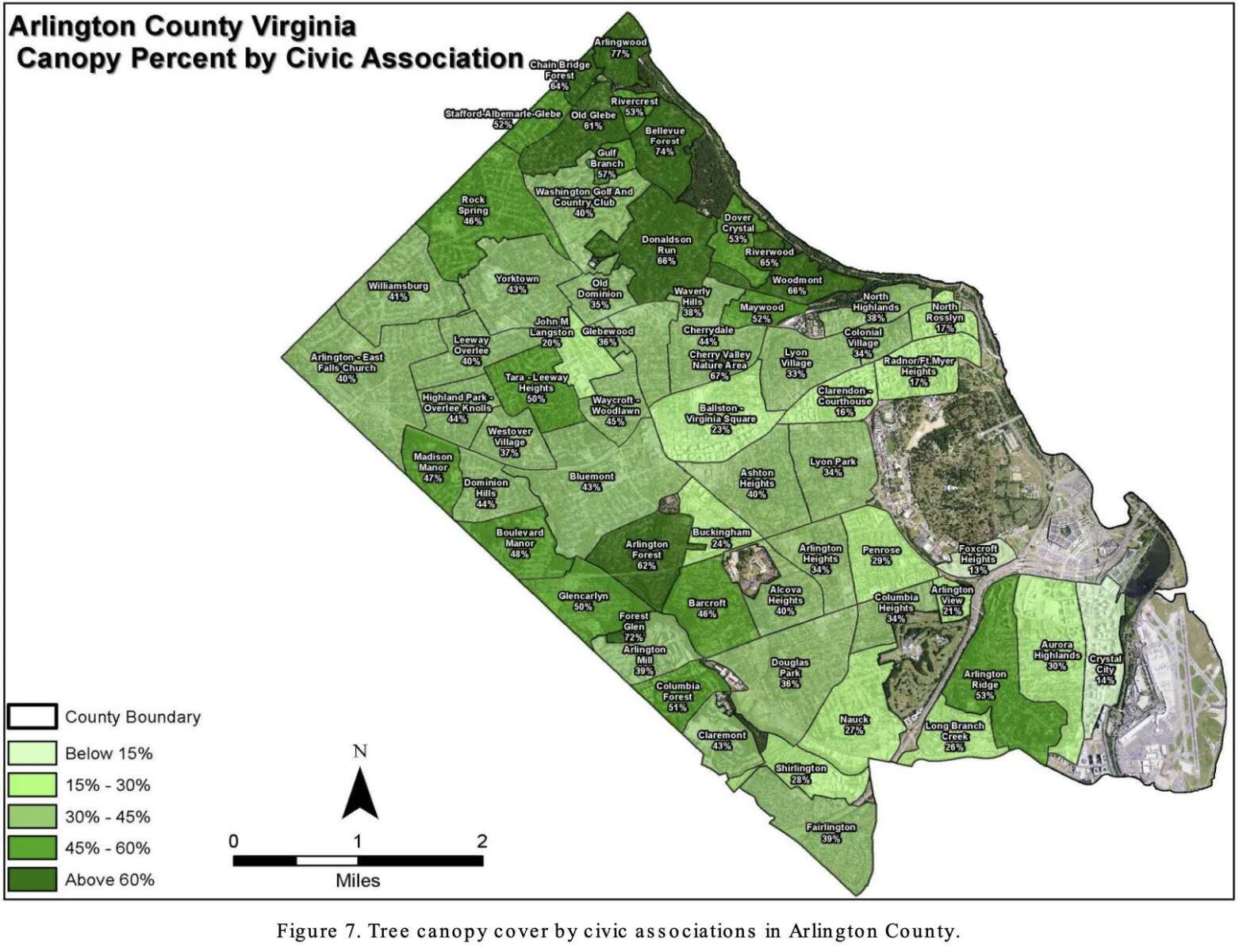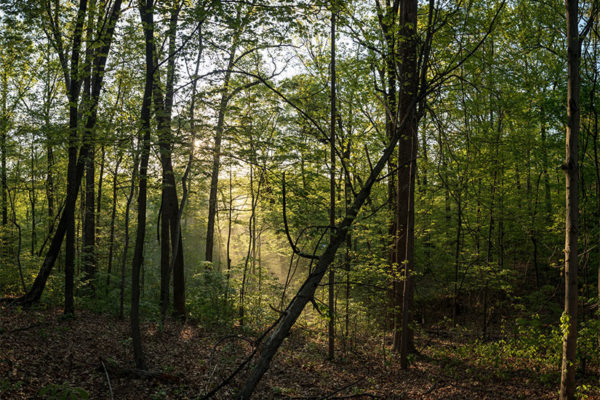The D.C. area’s council of governments wants to get at least half of the region covered in trees.
After years of shrinking tree cover, the Metropolitan Washington Council of Governments (COG) adopted a goal earlier this month of maintaining a minimum canopy of at least 50% throughout the D.C. area. It is calling on local governments including Arlington to commit to a similar goal.
To meet this target, a COG report recommends tree coverage of 35-40% in urban centers as dense as Arlington.
The county says it’s committed to ensuring that trees cover at least 40% of its land area. But as evidence suggests recent declines in Arlington’s tree canopy, experts say the county will need to overcome significant challenges to do its part for the region.
“We need to have trees and natural spaces that are mature and incorporated into what we have,” said Elenor Hodges, executive director of EcoAction Arlington.
Dwindling trees
Between 2018 and 2023, the D.C. area lost some 22,000 acres of trees, COG estimates.
About 49.6% of the area remains under trees. If current trends continue, the region would lose another 120,000 acres by 2050, dropping coverage to 44.4%.
Arlington may have played a part in recent declines. The county’s tree cover appears to have shrunk from 41% in 2016 — the last time the county conducted a tree canopy assessment — to 33% in 2021, according to a privately funded analysis.

The county is currently conducting a new canopy assessment, with results expected later this year. But some recent measurements, such as reviews of development permits, indicate fewer trees in Arlington than there used to be, county spokesperson Jerry Solomon said.
COG Board Chair Charles Allen argued that robust tree canopies are “one way we get closer to a more sustainable, livable, prosperous, and equitable future.”
“The best time to plant a tree was 20 years ago. The next best time is tomorrow,” said Allen, who is also a D.C. Council member. “While many COG jurisdictions have tree canopy goals and tree conservation efforts, if we adopt a regional tree canopy goal, we can help ensure we hit our climate goal of a 50 percent reduction in greenhouse gas emissions below 2005 levels by 2030.”
What Arlington is doing
Trees face particular challenges in heavily developed areas like Arlington.
Beyond just planting saplings, retaining a healthy canopy requires caring for existing trees and replacing them when they die, Hodges said. This is harder in urban areas, where trees face numerous threats to their health such as lack of space.
“One of the pieces of the puzzle is we need to maintain our existing supply, and that sometimes gets overlooked,” she said. “Trees just can’t be expected to survive.”
Urban planners must also play their part, Hodges believes — building in more than just “your token tree” and sometimes thinking creatively about tree alternatives like green roofs and green walls.
Arlington adopted its current tree coverage goal in December.
“We believe the County’s tree canopy goal is ambitious but attainable for an urban jurisdiction like Arlington based on population density and urbanization,” Solomon said. “We also want to emphasize that the FNRP [Forestry and Natural Resources Plan] recommends at least 40% canopy coverage — the goal is framed as a floor, not a ceiling, and our efforts to make Arlington greener will not stop if we achieve 40% tree canopy.”
The county is encouraging landowners to help grow a leafier county through the Tree Canopy Fund and annual tree distribution. On public property, meanwhile, Arlington is seeking conservation partnerships with large property owners, neighboring jurisdictions and the state and federal government.
While a place like Arlington might not be able to support many forested areas, COG outlined several benefits of trees in urban settings. They play a role in cooling down neighborhoods and improving biodiversity, and are also linked to better health outcomes.
Although COG is putting its region-wide tree goal to local governments, Michael Knapp, chair of the group’s Regional Tree Canopy Subcommittee, noted that a critical task will be to “instill a sense of ‘ownership’ in their citizens.”
“COG jurisdictions will need to devise and implement strategies aimed at inspiring individuals and community-based groups alike to support tree canopy goals adopted by their governing bodies,” he said. “Community outreach programs will need to convey an appreciation of the services and benefits provided by trees.”


